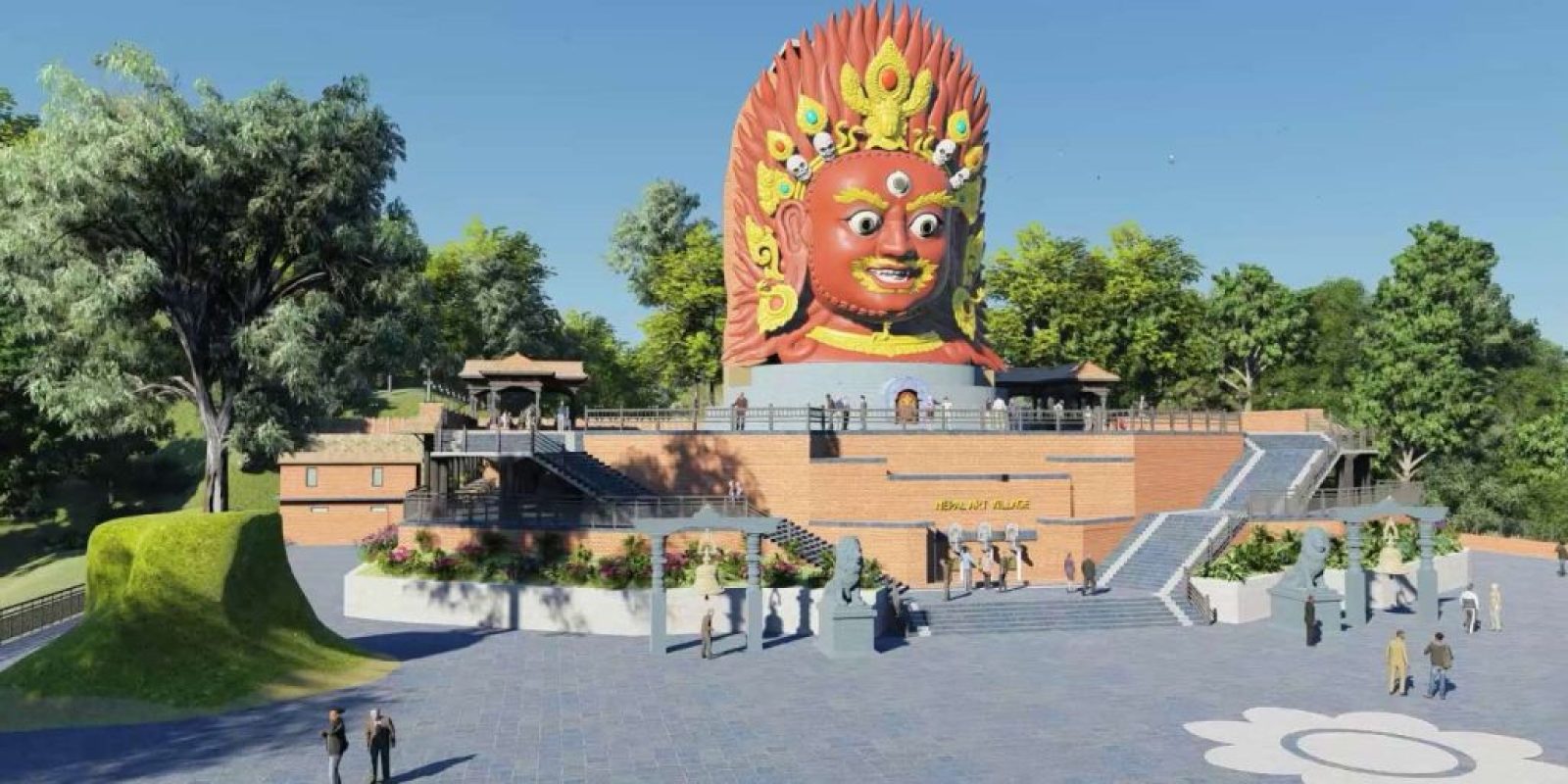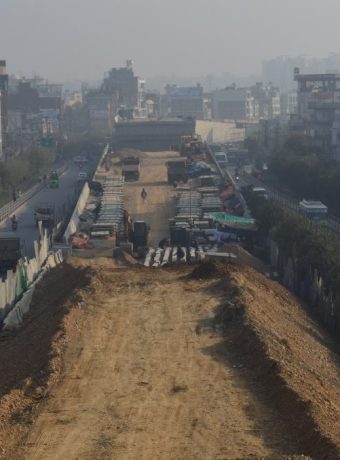Nepal Art Village to feature the World’s biggest Bhairav statue, honoring Late Rajkumar Shakya’s vision

Construction has officially begun on the ‘Nepal Art Village’ in Chhampi, Godawari, Lalitpur, which will house the world’s largest Bhairav statue. The massive statue, planned to be 72 feet tall, 58 feet wide, and weighs 65 tons, will be made from five metals and assembled within a five-story RCC building. The building will prominently feature the statue at the front, while an art museum will be located inside. The project aims to achieve recognition in the Guinness Book of Records due to the statue’s unprecedented size.
The project will cover a total area of 238 ropanis. The initial phase includes dedicating 52 ropanis to the Bhairav statue and other artifacts, with the remaining 186 ropanis developed into an art village. Visitors will be able to study Bhairav-related information and view a variety of Ganesh and Bhairav statues. The statue’s eyes, positioned 42 feet high, will offer panoramic views of the Kathmandu Valley and the Himalayan ranges.
The site will also feature dining establishments offering traditional local cuisine, an assembly hall, and cultural amenities such as temples, stone spouts, ponds, gardens, exhibition rooms, a stage, a helipad, an old-age home, wedding venues, a yoga center, banquet facilities, tent camps, adventure sports, and a swimming pool.
The project aims to establish and promote an art city, originally led by the late senior artist Rajkumar Shakya. His sons, Swarup and Saurav Shakya, now oversee the initiative. Although the project began in 2017 with land acquisition and was formally inaugurated in 2020, progress was delayed due to Rajkumar Shakya’s passing. Construction is now proceeding rapidly.
The project team includes art enthusiasts, businesspeople, social entrepreneurs, and notable personalities such as Rajendra Shakya, Rajesh Awale, Rupakman Maharjan, Jeewan Ratna Shakya, Madan Man Maharjan, Urmila Shakya, and Sanuchhori Shakya. The initiative is focused on preserving Nepali cultural art, showcasing traditional skills, and boosting tourism, with ongoing road improvements and infrastructure budgeted by both central and provincial governments.
The development will feature residential areas in traditional Nepali architectural styles, including commercial properties, guest houses, and private residences. The art village will emphasize the preservation and promotion of traditional Nepali arts and crafts, and include training centers and exhibitions. A botanical garden center will be established to protect and promote endangered and useful plants, with services focused on sustainable development and environmental education.
The site will also offer a ‘Jungle Path’ for nature walks, allowing visitors to observe wildlife and plant diversity, with plans for hiking, cycling, camping, and campfires.



